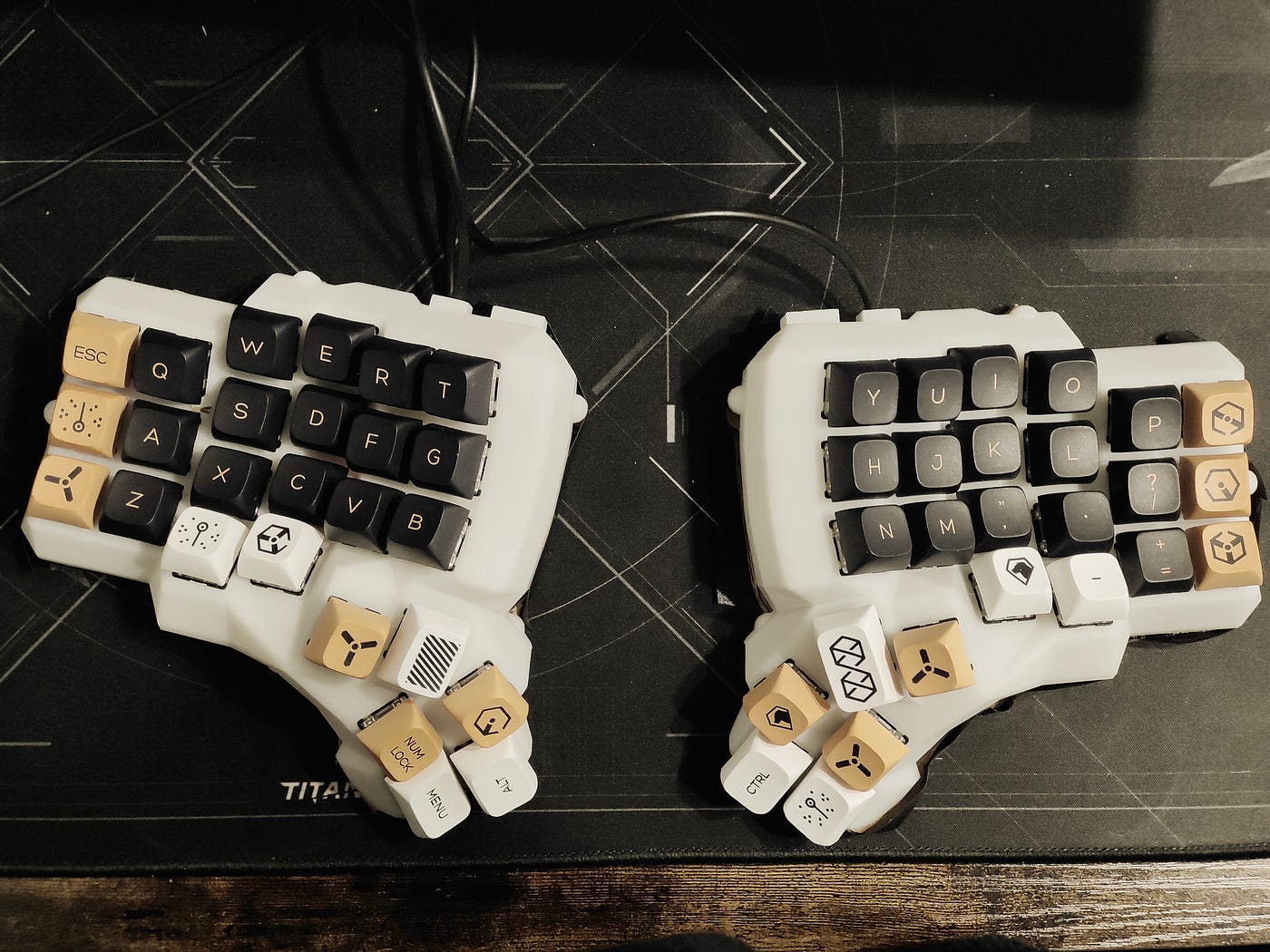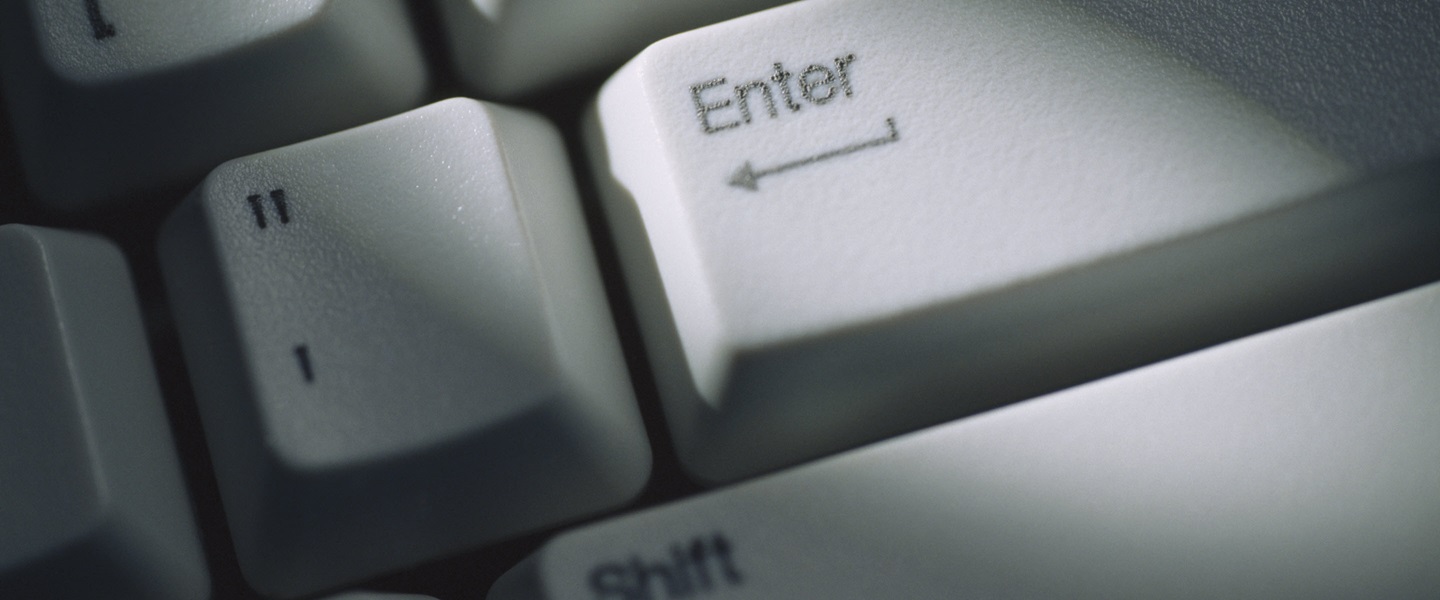The Ultimate Guide to Mechanical Keyboards offers a comprehensive overview and valuable insights on choosing and using mechanical keyboards for optimal typing experience. In this guide, we explore the various types of mechanical switches, keyboard layouts, and keycap materials, as well as the benefits and drawbacks of mechanical keyboards.
We also delve into customization options, maintenance tips, and recommendations for different use cases. Whether you’re a gamer, programmer, or simply someone who values a comfortable and efficient typing experience, this guide will help you make an informed decision and unlock the full potential of mechanical keyboards.
So, let’s dive in and discover the world of mechanical keyboards!
History Of Mechanical Keyboards
Delve into the fascinating *history of mechanical keyboards* to uncover their evolution and enduring popularity among enthusiasts. Explore the comprehensive *guide* that sheds light on the mechanisms and benefits of these tactile and responsive input devices.
The history of mechanical keyboards is a fascinating journey that delves into the evolution of this essential computer peripheral. From the invention of the first mechanical keyboard to its modern-day variations, the story behind these devices is rich with innovation and technological advancements.
Invention of the First Mechanical Keyboard
The invention of the first mechanical keyboard can be traced back to the mid-20th century, when early computer systems required reliable input devices. In 1948, the “Model F” keyboard was introduced by IBM, marking the birth of the first mass-produced mechanical keyboard. Unlike its predecessors, the Model F utilized individual switches for each key, providing a tactile and audible feedback that revolutionized typing experiences.
Evolution of Mechanical Keyboards
As technology advanced, so did mechanical keyboards. With the introduction of the “Model M” in the 1980s, the concept of “buckling spring” switches gained popularity, offering a distinct feel and sound that became synonymous with mechanical keyboards. In the 1990s, the emergence of Cherry MX switches further diversified the market, providing users with a range of options such as linear, tactile, and clicky switches, catering to various typing preferences.
In recent years, the proliferation of custom keycaps, RGB backlighting, and programmable features has propelled mechanical keyboards into the realm of personalization and performance. This evolution has solidified the appeal of mechanical keyboards among enthusiasts and professionals alike, paving the way for an expansive and dynamic market driven by innovation and user-centric design.
In summary, the history of mechanical keyboards is a testament to the enduring legacy of a pivotal input device that has stood the test of time. Understanding the origins and evolution of these keyboards sheds light on their enduring appeal and signifies their place in the ever-changing landscape of technology and user interaction.

Credit: medium.com
Key Components Of Mechanical Keyboards
Mechanical keyboards are comprised of key components such as switches, keycaps, stabilizers, and PCBs. Each part plays a crucial role in delivering the unique tactile and audible feedback associated with mechanical keyboards, offering a satisfying typing experience for users. Choosing the right components contributes to the overall performance and feel of the keyboard.
Key Components of Mechanical Keyboards
Switches
Switches are the core of a mechanical keyboard, dictating the feel and sound of key presses. They come in various types, including tactile, linear, and clicky. Each type of switch offers a distinct typing experience tailored to different user preferences. Tactile switches provide feedback with a noticeable bump, linear switches offer a smooth keystroke without a bump, and clicky switches provide both tactile feedback and an audible click with each press. Manufacturers such as Cherry, Gateron, and Kailh produce a variety of switches, allowing users to customize their typing experience based on preference and usage.
Keycaps
Keycaps are the visible part of a keyboard that users interact with. They cover the switches and determine the layout and appearance of the keyboard. Keycaps can be customized in terms of material, shape, and design, allowing users to personalize their keyboards to suit their preferences. Common keycap materials include ABS plastic, PBT plastic, and even metal. Double-shot ABS keycaps, in which two layers of plastic are molded together, are durable and provide excellent tactile feedback. Some enthusiasts opt for artisan keycaps, which feature intricate designs and add flair to the keyboard’s aesthetics.
Backplate and PCB
The backplate and PCB (Printed Circuit Board) provide structural integrity and electrical connectivity to the keyboard. The backplate serves as the foundation, ensuring minimal flex and a sturdy typing platform. A rigid backplate enhances typing stability and durability, especially during intense typing or gaming sessions. The PCB houses the electrical components and circuitry responsible for registering key presses and sending signals to the computer. High-quality PCBs feature gold-plated contacts for improved conductivity and longevity. Additionally, some keyboards feature hot-swappable PCBs, allowing users to easily change switches without soldering.
In summary, switches determine the typing experience, keycaps affect aesthetics and tactile feel, while the backplate and PCB ensure structural stability and functionality. Each component plays a crucial role in the overall performance and user experience of mechanical keyboards. By understanding these key components, users can make informed decisions when selecting or customizing their mechanical keyboards to suit their preferences and needs.
Types Of Mechanical Keyboard Switches
When it comes to mechanical keyboards, one of the most important factors to consider is the type of switches used. The different types of switches determine how the keys feel and sound when pressed, greatly affecting the typing experience. In this guide, we’ll dive into the three main types of mechanical keyboard switches: tactile switches, clicky switches, and linear switches.
Tactile Switches
Tactile switches are known for providing tactile feedback, offering a slight bump or resistance when pressed. This helps typists know that they have successfully registered a keystroke. Tactile switches are ideal for those who prefer a more pronounced typing experience with clear feedback. Here are some popular tactile switches:
| Switch Name | Actuation Force | Key Features |
|---|---|---|
| Cherry MX Brown | 45g | – Light tactile bump – Quiet operation |
| Gateron Brown | 45g | – Smooth tactile bump – Affordable |
| Zealios 65g | 65g | – Satisfying tactile bump – Customizability options |
Clicky Switches
Clicky switches, as the name suggests, produce an audible click sound when pressed. They also provide tactile feedback, making them popular among typists who appreciate the auditory and tactile confirmation of key presses. Here are some clicky switches to consider:
- Cherry MX Blue: Loud and crisp click sound with a pronounced tactile bump.
- Razer Green: Designed for gaming, these switches have a distinctive click and tactile experience.
- Kailh Box White: Offers a high-pitched click sound and a noticeable tactile bump.
Linear Switches
Linear switches have a smooth and consistent keystroke with no tactile bump or audible click. These switches are often preferred by gamers due to their linear travel and rapid actuation. However, they are also favored by those who want a quiet typing experience. Here are some popular linear switches:
- Cherry MX Red: Lightweight with a linear feel, perfect for fast-paced typing and gaming.
- Gateron Yellow: Smooth keystrokes without any tactile bump, ideal for gaming.
- Tealios 67g: Smooth and buttery keystrokes, offering a satisfying linear experience.
Choosing the right switch type is subjective, and it ultimately depends on your personal preferences. Whether you value tactility, audible feedback, or a smooth linear experience, there’s a mechanical keyboard switch out there for you.
Advantages Of Mechanical Keyboards
Mechanical keyboards offer several advantages over their conventional counterparts, making them a preferred choice among gamers, programmers, and office professionals. From increased durability to enhanced typing experience and customization options, these keyboards are designed to elevate your overall keyboarding experience.
Durability
One of the standout advantages of mechanical keyboards is their exceptional durability. Unlike standard membrane keyboards that wear out over time, mechanical keyboards are built to last. The keys of mechanical keyboards are constructed with individual mechanical switches that contain a spring-loaded mechanism. This ensures each keystroke is met with a satisfying and consistent response, allowing for thousands of hours of typing without experiencing issues such as key fatigue or “ghost” keystrokes.
Enhanced Typing Experience
When it comes to typing, the feel and feedback are crucial, and mechanical keyboards excel in this aspect. The mechanical switches of these keyboards offer a tactile or audible click when pressed, providing a satisfying sensation to typists. This feedback not only improves typing accuracy but also reduces the strain on your hands and fingers, allowing for prolonged typing sessions with less discomfort.
Moreover, the actuation point of mechanical switches is higher than that of membrane keyboards, meaning you do not have to press the keys all the way down for the keystroke to be recognized. This not only makes typing faster but also reduces the risk of accidental keystrokes, resulting in a more efficient and error-free typing experience.
Customization Options
Another advantage of mechanical keyboards is the wide array of customization options they offer. These keyboards often come with programmable keys, allowing users to assign specific functions or macros to individual keys. This feature is especially beneficial for gamers and programmers who rely on quick and precise input. Furthermore, mechanical keyboards come in varying keycap profiles, allowing you to choose the keycap style that best suits your preferences and typing style.
Additionally, mechanical keyboards offer the ability to swap out the keycaps, making it easy to personalize your keyboard’s aesthetics. Whether you prefer a colorful and vibrant look or a sleek and minimalist design, mechanical keyboards provide the flexibility to create a keyboard that reflects your unique style.
In conclusion, the advantages of mechanical keyboards extend beyond their enhanced durability, typing experience, and customization options. These keyboards are a valuable investment for anyone seeking a reliable, comfortable, and personalized typing experience.
Customizing Your Mechanical Keyboard
When it comes to mechanical keyboards, customizing them is a key aspect for enthusiasts. Here we delve into Switch Swapping, Keycap Replacement, and LED Customization.
Switch Swapping
Changing switches can enhance typing experience. Here’s a quick rundown:
- Research different switch types and actuation forces.
- Use a switch puller for removal.
- Align new switches correctly before soldering.
Keycap Replacement
Personalize your keyboard further with keycap swaps:
- Choose keycaps based on material and profile type.
- Use a keycap puller to remove and install keycaps.
- Consider novelty keycaps for a fun touch.
Led Customization
Elevate aesthetics with LED customization options:
- Experiment with different RGB lighting effects.
- Customize lighting patterns through keyboard software.
- Explore backlighting colors to suit your style.

Credit: hhkeyboard.us
Popular Mechanical Keyboard Brands
When it comes to mechanical keyboards, several brands have established themselves as leaders in the market. These trusted brands are known for their innovative designs, durable construction, and exceptional performance. In this section, we will take a closer look at three popular mechanical keyboard brands: Corsair, Razer, and Ducky.
Corsair
Corsair is a well-respected brand in the gaming community, known for producing high-quality gaming peripherals. Their mechanical keyboards are no exception. Corsair keyboards are praised for their responsiveness, customizable RGB lighting, and robust build quality. These keyboards are designed specifically for gamers who demand precise accuracy and fast key actuation. With a wide range of options catering to various preferences and budgets, Corsair has become a go-to brand for many gamers.
Razer
Razer is another popular brand that has made a name for itself in the gaming industry with its cutting-edge technology. Razer keyboards are known for their sleek designs, ergonomic features, and advanced customization options. The company’s proprietary mechanical switches, such as the Razer Green and Razer Yellow switches, are highly regarded for their tactile feel and excellent durability. With their focus on high performance and aesthetics, Razer keyboards appeal to both gamers and professionals alike.
Ducky
Ducky is a Taiwanese brand that has gained a strong following among enthusiasts and professionals in the mechanical keyboard community. Ducky keyboards stand out for their minimalist designs, build quality, and outstanding typing experience. One notable feature of Ducky keyboards is their extensive range of mechanical switch options, including popular options like Cherry MX switches. These keyboards are favored by those who value simplicity and functionality, as well as by professionals who require reliable and comfortable typing performance.
Choosing The Right Mechanical Keyboard For You
When it comes to finding the perfect mechanical keyboard for your needs, there are several factors to consider. Whether you’re a dedicated gamer or spend your days typing away at work, selecting the right keyboard can greatly enhance your productivity and overall experience. In this guide, we will explore three key factors to consider when choosing a mechanical keyboard: your gaming or typing preference, budget considerations, and layout and size.
Gaming Or Typing Preference
If you’re an avid gamer, having a mechanical keyboard specifically designed for gaming can make a world of difference. These keyboards often feature mechanical switches that are more responsive, allowing for faster and more accurate keystrokes. They also often include additional gaming-specific features, such as customizable macros and RGB lighting. On the other hand, if your keyboard use primarily involves typing, you may prefer a keyboard with a different switch type that offers a more tactile and satisfying typing experience. It’s important to determine whether your main focus is gaming or typing to choose the right keyboard that meets your needs.
Budget Considerations
While mechanical keyboards can vary greatly in price, it’s important to set a budget before you start your search. Higher-end keyboards often come with premium features such as aluminum frames, detachable cables, and advanced customization options. However, these features may not be necessary for everyone. If you’re on a tight budget, don’t worry! There are plenty of more affordable options available that still provide a great typing or gaming experience. By determining your budget in advance, you can narrow down your options and find the best keyboard that fits your needs without breaking the bank.
Layout And Size
The layout and size of a mechanical keyboard are also important considerations. Keyboards come in various forms and sizes, including full-size, tenkeyless (TKL), and compact. Full-size keyboards feature a number pad on the side, which can be beneficial for data entry or gaming. TKL keyboards, on the other hand, omit the number pad to save space, making them more portable and suitable for small desk setups. Compact keyboards take it a step further by eliminating the function row as well, resulting in a more minimalist design. Consider your workspace and personal preferences when choosing the right size and layout for your mechanical keyboard.
Maintenance And Cleaning Tips For Mechanical Keyboards
Maintenance and Cleaning Tips for Mechanical Keyboards
Regularly cleaning your mechanical keyboard is essential for ensuring optimal performance and longevity.
Regular Cleaning Routine
- Gently remove keycaps using a keycap puller.
- Use compressed air to blow away any debris and dust.
- Wipe the keyboard surface with a microfiber cloth.
Dealing with Stuck Keys
- Check for any obstructions under the affected key.
- Gently press the key several times to dislodge debris.
- If the issue persists, consider removing the keycap for further inspection.
Preventing Dust Buildup
- Keep your keyboard covered when not in use.
- Regularly clean your workspace to minimize dust accumulation.
- Consider using a keyboard cover or dust guard for added protection.
Frequently Asked Questions On The Ultimate Guide To Mechanical Keyboards
What Are The Basics Of Mechanical Keyboards?
Mechanical keyboards use individual switches for each key. They offer tactile feedback and better durability compared to membrane keyboards. They are popular among gamers and professionals for their customizable options and satisfying typing experience.
What Is The Best Mechanical Keyboard For First Timers?
The best mechanical keyboard for first timers is the Redragon K552. It offers a great balance of quality and affordability, making it an ideal choice for beginners.
Where To Get Started With Mechanical Keyboards?
To get started with mechanical keyboards, explore online marketplaces like Amazon or specialized retailers such as mechanicalkeyboards. com. Consider your preferences for layout, switches (e. g. , Cherry MX), and budget. Research reviews and forums to make an informed purchasing decision.
How Do I Choose A Good Mechanical Keyboard?
Don’t forget to accessorize with keycaps, wrist rests, and a keyboard sleeve for protection.u003cbru003eTo choose a good mechanical keyboard, consider key factors like switch type (such as Cherry MX or Gateron), build quality, layout (full-size, tenkeyless), and additional features (like RGB lighting or programmable keys). Determine your preferences and usage requirements to find a keyboard that suits your needs.
Conclusion
In a nutshell, mechanical keyboards offer durability, customization, and a satisfying typing experience. From the clicky switches to the tactile feedback, there’s a perfect match for every typist. Dive into the world of mechanical keyboards and discover a whole new realm of productivity and enjoyment.
Level up your typing game today!



